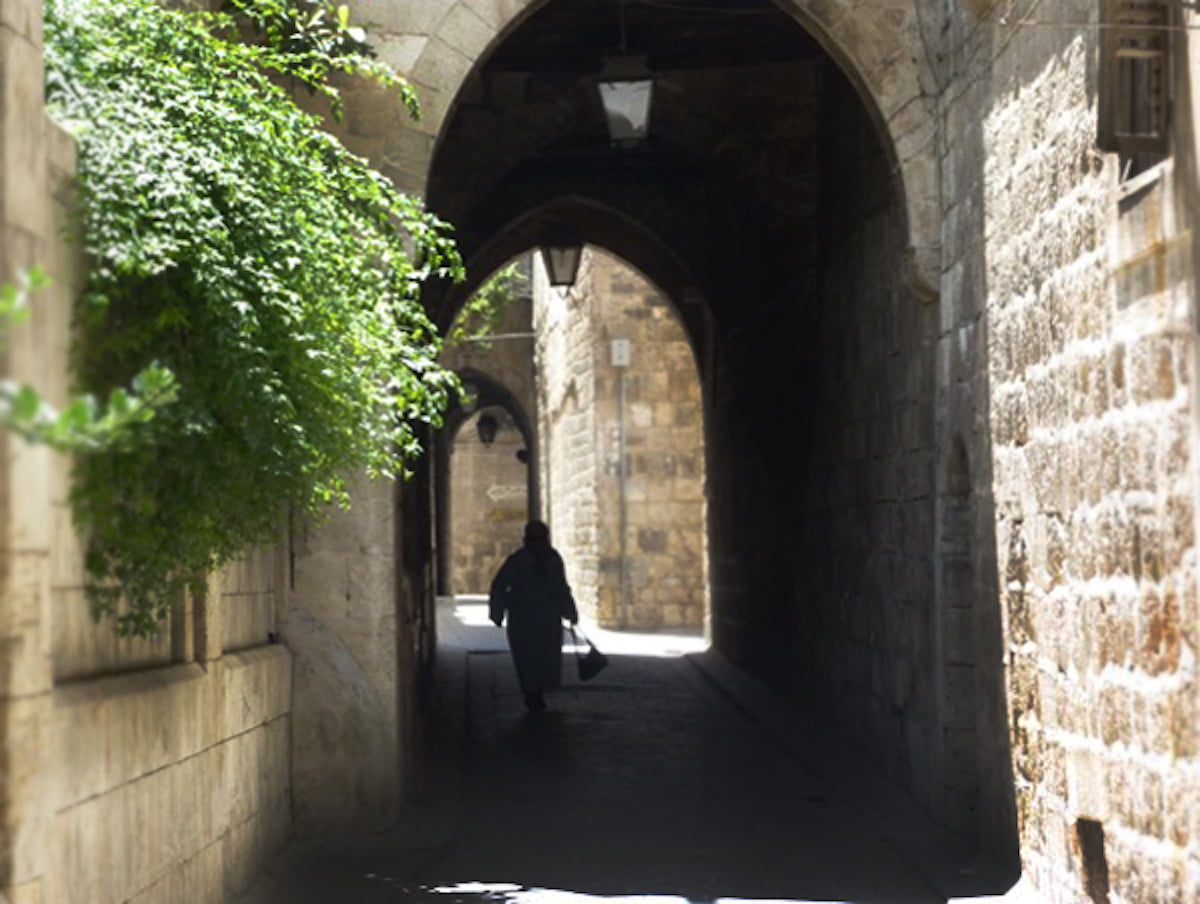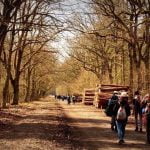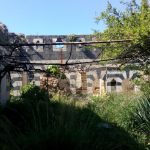While visiting Aleppo in the summer of 2010, I invited my American-born husband to stroll through its streets, starting from our old house in Azizieh.
We used to live near the Latin Church, built in 1937, where mass is celebrated in Arabic and Latin and many times in French. We woke up that Sunday with the sounds of the the bells in the tower, and quickly got ready to catch the other churches before noon.
Facing our house was a narrow street with its shining, freshly washed cobblestones. It was probably built during the Ottoman Empire and still had the covered balconies made of ornate wood and decorative shutters (kishk in Arabic). I used to cross this street daily on my way to the bus – the cobblestones did a number on my shoes, but the shoemaker loved it. How I miss the sight of this street. Back then, I remember imagining the lives of the people who lived behind the wooden balconies.
We arrived at Tilal, a hustling and bustling area with shops and street vendors of all kinds, all loudly promoting their merchandise. How many times I shopped and bargained with the vendors! That was part of the fun, and part of our culture.
We walked through a narrow street, until we reached Sahat Farhat with an imposing statue of Bishop Germanos Farhat. This is the old Christian area of the City, where you find churches of various denominations and old-fashioned houses with courtyards full of jasmine flowers, citrus trees, and the traditional fountain in the center. Many of these homes were later converted into restaurants or boutique hotels – I had the best kebab with cherries there (kabab bi karaz), which Aleppo is famous for. Further down, the trickling water in the fountain was our music and part of the décor.
We strolled down the narrow streets until we arrived at the Maronite Church. The Sunday mass had started; they prayed in Aramaic, the ancient language spoken by Christ. It was a familiar sound from the times I went to the church with my mother. The voice of deacon chanting came very vividly. I wish I could revisit those days and learn the Syriac language.
Next we approached the Greek Catholic church, where celebration were held in Greek. As we walked past the famous carved arches and ancient icons, I recalled the day my sister got married. She was wearing a crown and had to walk around the ceremony table three times. It was so funny and also nerve-wracking because I was afraid that she would drop the crown. When the scent of the incense struck me, I could see that moment of her wedding very clearly…
Back in the old city, we passed through a medieval arch to reach the Armenian Orthodox Church, a humble and touching house of worship where the mass was celebrated in Armenian and in Arabic. The ancient building went back to the 15th Century. It proudly displayed an intricate 400 years-old painting that was described to me by an Armenian friend a long time ago. I wish I could see my friend again.
As we left, it was about noon, and the smell of the delicious food teased our appetite. We ended our tour in Sahat Al Hatab, where many artisan shops, restaurants, and elaborated jewellery windows had replaced those of my childhood, when wood was the primary commodity sold. I can still taste everything we ate with my niece in one of the city’s modern restaurants: kebab, kibbe, hummus, tabouleh, chicken tarator and definitely the baklava for dessert.
You can’t finish a day in Aleppo without tasting its exquisite dishes, so we decided to forego the citadel for another day. On the way back home, the muezzin of a nearby mosque was chanting in the calm of a Sunday afternoon, and this call to prayer was part of my daily life in Aleppo.
I miss you Aleppo!
Images: Pauline Saadé Anthony







